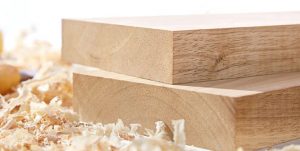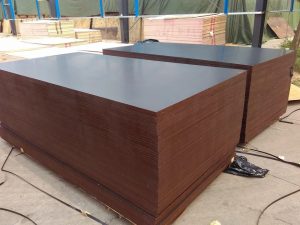The bending stiffness of plywood is an important indicator of its ability to resist bending deformation and is significantly affected by the internal defects of the plywood. Common defects within plywood include knots, splits, hollows, stutters, penetration holes, glue seam defects, and warping.
Knots
Knots are scars formed during the growth of trees, which can cause localized strength reduction and uneven fiber distribution in plywood. Large knots can seriously weaken the bending stiffness, especially when the knots are located in the surface or core of the plywood.
Splitting
Splitting is a crack formed inside the plywood along the wood grain direction, mainly caused by stress release during the wood drying process. Splitting will reduce the tensile strength and bending stiffness of the plywood, and in severe cases, it may cause the plywood to break.
Hollowness
Hollowness is a cavity inside a plywood, usually caused by defects such as knots, splits or insects. Hollowness reduces the overall density and strength of the plywood, thus affecting its bending stiffness.
Stuttering
Stuttering is the local fiber entanglement formed during the growth of wood, which leads to the increase of local strength of plywood. However, the presence of stuttering will make the plywood fiber distribution uneven, thus reducing its bending stiffness.
Holes
Holes are produced during the production of plywood, which are common in peeling veneer or gluing process. Holes will reduce the bending strength and stiffness of plywood, especially when the holes are located in the stress-bearing area of the plywood.
Glue seam defects
Glue joint defects refer to the failure or uneven distribution of the adhesive in the bonding layer, causing the plywood to delaminate or reduced intensity. Glue seam defects will cause the plywood to lose its integrity and significantly reduce its bending stiffness.
Warping
Warping refers to the uneven deformation of plywood during production or use, which causes the board surface to bend or twist. Warping will reduce the flatness and rigidity of plywood, affecting its subsequent processing and performance.
Quantify the impact of defects
The extent to which various defects affect the bending stiffness of plywood varies depending on the type of defect, size, location, and plywood structure. Generally speaking, the larger defect size and closer location is to stress area of plywood, the greater impact on the bending stiffness.
Research shows that the bending stiffness of plywood is negatively correlated with the knot area. When the knot area increases, the bending stiffness decreases significantly. Larger splits and hollows can also cause a significant decrease in the bending stiffness of plywood. Glue seam defects have a particularly serious impact on bending stiffness, and slight glue seam degumming can lead to a significant reduction in bending stiffness.
Defect control
In order to maximize the bending stiffness of plywood, measures need to be taken to control defects. These measures include:
*Select high-quality wood raw materials and avoid wood with serious defects
*Reasonably control the drying process of wood to prevent splitting and hollowing
*Optimize the structure of plywood and place defects in positions with less stress
*Strictly control the gluing process to ensure the firmness of the gluing seam
*Appropriately grade and remove defects of plywood to avoid serious defects affecting performance
Optimization of bonding process parameters on bending stiffness
1.Differences in shear strength, modulus and curing time of different adhesives significantly affect the bending stiffness of plywood.
2.Thermosetting adhesives (such as phenolic resins) have higher strength and modulus, but longer curing time and excellent water resistance.
3.Thermoplastic adhesives (such as polyvinyl ether) have better flexibility and weather resistance, but relatively lower strength and modulus.
Glue type selection
The type of cement has a significant impact on bending stiffness. High-modulus glues, such as epoxies, increase bending stiffness, while low-modulus glues, such as polyvinyl alcohol glue, decrease bending stiffness.
Glue thickness
Glue thickness is another important parameter that affects bending stiffness. Generally speaking, the thicker the glue layer, the lower the bending stiffness. This is because the glue layer will produce shear deformation when bending, thereby reducing the overall stiffness.
Clamping pressure
Clamping pressure also has an effect on bending stiffness. High clamping pressure promotes glue penetration and forms a stronger glue bond. This in turn improves bending stiffness.


